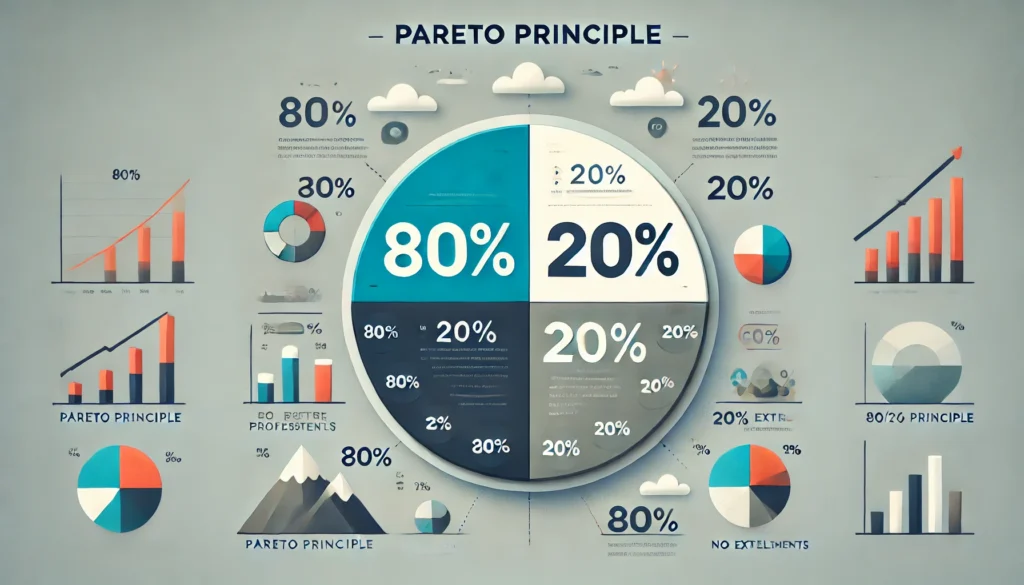Ever feel like you’re burning the midnight oil but still not getting anywhere? You’re not alone.
In the world of shared services, where efficiency is king, it’s crucial to cut through the noise. And let’s face it, in a sea of processes, data, and reports, we sometimes overlook the real game-changers. Enter Pareto Analysis, the nifty little tool that can shift your perspective on what really matters.
What is Pareto Analysis?
Think of Pareto Analysis as your efficiency compass. Named after the Italian economist Vilfredo Pareto, this method leverages the 80/20 rule. You know, the idea that 80% of your results come from just 20% of your efforts?
In the context of Global Business Services (GBS), this means identifying the few processes or issues that cause the most significant impact, both positive and negative. By focusing your energies there, you can unlock efficiency and achieve process optimization.
Why It Matters in GBS
Let me share a quick story. When I was setting up a shared service center for a global organization a few years back, we got bogged down in countless processes, trying to optimize everything at once. It was chaos!
But then we started digging deep into Pareto Analysis.
We discovered that just three core processes were consuming 70% of our resources.
By honing in on those areas, we streamlined operations significantly and saved the company thousands of hours annually. That’s the magic of Pareto Analysis—it helps you zero in on the impactful few instead of chasing the many.
Steps to Conducting Pareto Analysis
- Identify and List Problems: Gather data on the processes you’re running. What are the bottlenecks? Where’s the delay?
- Collect Data: Quantify the impact. This includes time wasted, costs incurred, or risks attached. The clearer the data, the clearer the picture.
- Sort and Analyze: Organize this information from largest to smallest impact. Use charts or graphs—visuals help! They’re not just pretty decorations.
- Prioritize: Focus on that crucial 20%. What changes can you implement that will drive the most significant results?
- Implement Changes: Now comes the fun part—put those insights into action. Make changes where you know they’ll matter the most.
The Real-World Impact: Case Studies
Let’s break it down further with a couple of examples from my own experience.
- Finance Transformation:
In one company, finance was a tangled web of approvals and paperwork. After conducting a Pareto Analysis, we identified that a few types of transactions accounted for over 75% of processing time. By automating these specific transactions, we slashed processing time by 60%. - Customer Support Optimization:
For another organization, we analyzed support tickets. Surprisingly, 80% of customer complaints stemmed from just two issues. Addressing these led to a 50% decrease in ticket volume. Less volume means a more focused team, better response times, and happier customers.
Common Pitfalls to Avoid
You’re probably thinking it all sounds great, but let’s keep it real. Here are some traps that you might fall into:
- Overlooking the Minor Processes: Sometimes, small issues can snowball. Avoid ignoring them completely.
- Involving Too Many Metrics: Don’t drown yourself in data. Less is more.
- Not Revisiting: Pareto is not a set-it-and-forget-it strategy. Reassess periodically. Processes evolve.
Tools to Assist Your Efficiency Journey
Ready to dive deeper into optimization? Here are a few tools that can help you conduct Pareto Analysis effectively:
- Excel: Good old Excel can be your best friend for creating charts and analyzing data.
- Tableau: Great for visualizing complex data in a digestible manner.
- Process Mapping Software: Tools like Lucidchart can help visualize current vs. streamlined processes.
Transforming Mindsets
As much as tools and strategies matter, remember that transformation starts with mindset.
Encouraging your team to adopt a Pareto perspective is vital. Foster a culture of continuous improvement where every voice matters. Create an environment where team members are eager to bring their insights to the table.
At the end of the day, it’s about finding that sweet spot between efficiency and satisfaction. A happy team is often an efficient one.
Embrace the Change
Unlocking efficiency doesn’t happen overnight. It’s a journey. But you have the tools at your disposal. With Pareto Analysis in your toolkit, you’re armed to tackle complexities and streamline processes.
Take it one step at a time, and don’t hesitate to reach out to experts in shared services. The journey can be complex, but the rewards are absolutely worth it.
Looking for more insights into transforming the shared services landscape? Check out THEGBSEDGE blog, where I dive deeper into strategies on innovation and leadership in GBS.
Let’s continue engaging and transforming together!


